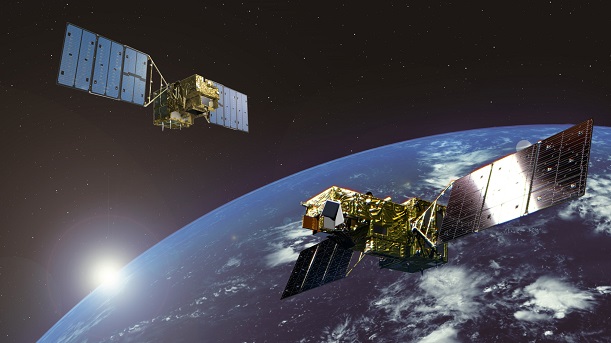Global Environment
Observing Climate Change from Space : The challenges of the GOSAT series
About GOSAT (Greenhouse gases Observing SATellite) Series

GOSAT (upper left) and GOSAT-2 (bottom right) (C) JAXA
GOSAT (Greenhouse gases Observing SATellite) is the world's first satellite designed specifically for monitoring greenhouse gases from space. GOSAT is still operating since its launch on January 23, 2009.
GOSAT has revealed details on the global distribution of carbon dioxide (CO2) and methane (CH4) concentrations, as well as on where and how much greenhouse gases are absorbed or emitted.
Global atmospheric concentrations of CO2 and CH4 in all layers of the atmosphere from the ground surface to the top of the atmosphere rise yearly with seasonal oscillation.
These results are contributing to the climate science and useful for climate change related policies.
GOSAT-2, a successor of GOSAT was successfully launched on October 29, 2018.
Using this satellite, we will observe whole-atmosphere CO2 and CH4 concentrations from space continuously with high accuracy, and will estimate anthropogenic emissions from large city and large-scale emission source, thereby contributing to further enhancing transparency and GHG emission reductions.
GOSAT and GOSAT-2 projects are jointly promoted by the Ministry of the Environment, Japan, the National Institute for Environmental Studies, and Japan Aerospace Exploration Agency.
Links for More Information
YouTube
- Observing Climate Change from Space and Earth : The challenges of the GOSAT series
- Greenhouse Gases Observing SATellite (GOSAT) - space "eyes" watching our planet